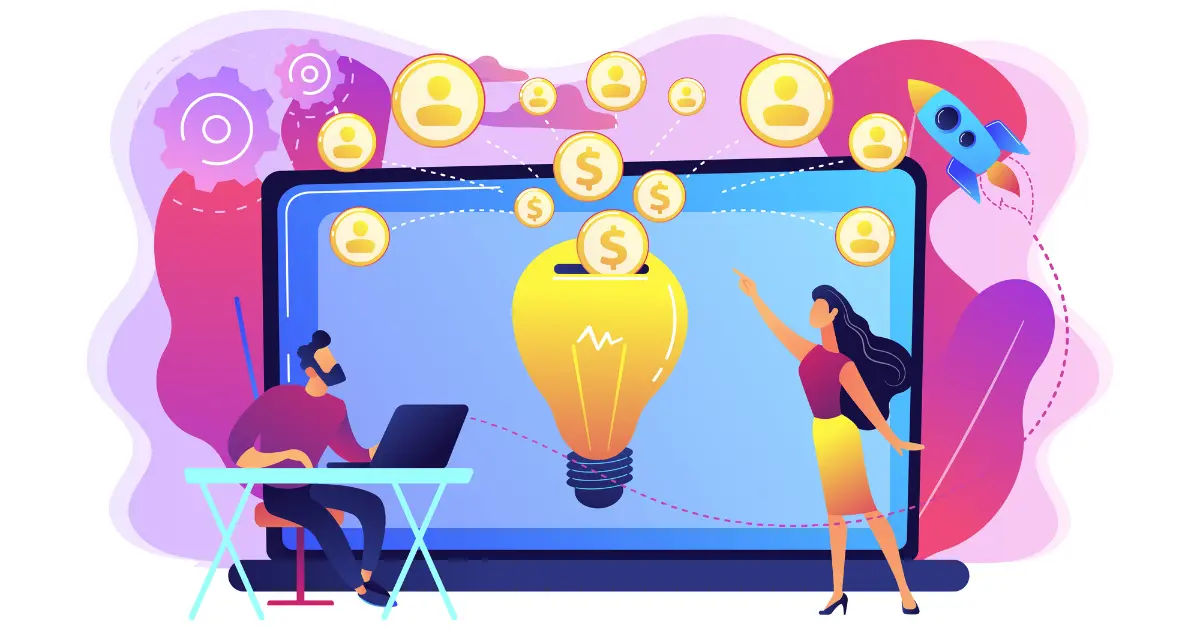The Gig Economy and Its Impact on HR Practices
Ipsita P | 02-01-2024 | 08 min read

Before analyzing the implications for HRM practices, it is essential to understand what the gig economy is. In general, the gig economy is a freelance or labor market system based on part-time or temporary positions provided by independent freelancers or contractors rather than full-time permanent employees. Both employers and employees enjoy many benefits in terms of independence and flexibility. In the gig economy, companies hire sovereign employees or workers on short-term contracts without job security. Additionally, know that the gig economy has a negative impact on a variety of HR practices, including talent recruitment, benefits, compensation, workforce development, performance management, compensation management, and employee motivation and involvement in decision-making.
What Is The Gig Economy?
Musicians commonly use the term "gig" to refer to a venue. Similarly, the gig economy includes short-term or temporary work as an independent contractor for one or more employers rather than full-time employment with one company. Although gig workers work for a variety of employers, they are not considered employees in the traditional sense.
The gig economy is a type of labor market that involves short-term, freelance, or on-demand work, often realized through digital platforms. This dynamic ecosystem allows individuals to work as independent contractors, giving them the freedom to choose their own projects, schedules, and employers. It differs from traditional full-time employment because it relies on flexibility and autonomy.
How The Gig Economy Operates?
The gig economy connects individuals seeking short-term work with businesses or clients who need specific services.
Connecting the platform or service :
It's interesting to see how gig economy stages or apps have been playing a vital part in interfacing gig laborers with clients or customers. These stages serve as mediators and permit free temporary workers or consultants to offer a range of administrations, counting ride-sharing, independent work, conveyance administrations, and short-term rentals. The sort of stage or app depends on the benefit being advertised.
Enrollment and Profile Creation:
Gig specialists and businesses enroll on platforms. Laborers make profiles highlighting aptitudes, involvement, accessibility, and rates. Businesses post prerequisites or work postings.
Work Coordinating and Bidding:
Gig specialists utilize online stages to discover work openings or ventures that coordinate their abilities and inclinations. They can apply for employment, offered on ventures, or be specifically coordinated with clients. For example, independent scholars may offer writing assignments, whereas drivers can accept ride requests.
Understanding and Completion of Work:
After being coordinated or hired, gig specialists and clients agree on the terms of the work, counting what ought to be done, when it ought to be completed, and how much installment will be received. The work is ordinarily done remotely or at an area chosen by the client.
Payment and Appraisals:
Upon completion, the gig specialist submits the work or service. The client releases installment through the platform, which ordinarily takes a charge or commission. Both parties may take off reviews or evaluations, which contribute to the gig worker's profile and reputation.
The Growth of Gig Economy
The surge in innovative progressions has driven to a rise within the gig economy, which offers adaptable work courses of action. The gig economy is driven by the want for independence and diverse work openings, which cater to changing work preferences. This model enables digital stages to put through people who look for short-term, on-demand work with businesses that require specific administrations, hence cultivating its fast development.
Some of the factors responsible for the expansion of the gig economy are -
- Technology Progressions: The gig economy has developed with the assistance of digital platforms and portable apps. These stages have made it easier for gig specialists to associate with potential clients or customers.
- Workforce Inclinations: These days, many individuals prioritize work-life adjustment, independence, and flexibility. The gig economy aligns with these inclinations, giving people the flexibility to select where, when, and how much they work.
- Economic Changes: Following the 2008 worldwide money related emergency, conventional work security declined. This drove numerous people to turn to gig work out of need. Even after the economies recouped, the offer of adaptability kept on pulling in workers to the gig economy.
- Globalization and Remote Work: The rise of globalization and farther work has extended openings for gig workers to work from anyplace and engage with clients and managers around the world.
- Pandemic Impact: The COVID-19 pandemic quickened the development of the gig economy. Lockdowns and social distancing expanded demand for gig workers giving conveyance, remote work, and outsourcing services online.
- Demand for Cost-Effective Arrangements: Companies can decrease overhead costs by accessing specialized ability through the gig economy on an as-needed basis.
- Consumer Inclinations: The gig economy has developed due to changing customer behaviors, such as the demand for on-demand services like food conveyance, transportation, and independent work. This aligns with the expanding inclination for comfort and personalized services.
- Entrepreneurial Opportunities: The gig economy empowers people to start businesses, set rates, and market services independently, fostering business. This appeals to those who want to be their own bosses and control their careers.
- Social Shifts and Attitudes: States of mind towards work are shifting to prioritize experiences and adaptability over long-term work security. More youthful generations are more likely to look for gig work for diverse experiences and varied wage streams.

Who are The Gig Workers?
Freelancers: These incorporate scholars, realistic originators, software engineers, experts, and other experts who offer their ability on a venture or contract premise.
Drivers and Delivery Staff: Ride-sharing drivers (Uber, Lyft) and delivery personnel (DoorDash, Postmates) are gig specialists who give transportation or deliver products as required.
Service Suppliers: Task-based specialists (TaskRabbit) perform different assignments such as domestic repairs, collecting furniture, cleaning, or other odd occupations on an independent premise.
Short-Term Rental Hosts: People who lease out their properties or rooms by means of stages like Airbnb or Vrbo for brief remains or lodging are too considered gig specialists.
Professional Services: Attorneys, bookkeepers, IT pros, and other experts who offer their administrations freely or on an extended premise are a portion of the gig economy.
Examples of Gig Economy
The gig economy has had a noteworthy effect on the food service industry, and “DoorDash” may be an eminent illustration. Established in 2013, DoorDash took advantage of the growing demand for meal conveyance services. Amid the COVID-19 widespread, DoorDash experienced a gigantic increment in trade due to lockdowns and limitations, which resulted in an increment in food conveyance requests. DoorDash rapidly adapted to meet this request by giving gig workers the opportunity to gain cash by delivering food from eateries to customers' doorsteps.
DoorDash's victory highlights the gig economy's part in reshaping the food service industry. It permitted people to work flexibly as delivery drivers, permitting them to select their plans and areas. At the same time, it gives buyers comfort by advertising a wide range of eatery choices accessible for conveyance.
DoorDash's Initial Public Offering (IPO) in late 2020 highlighted the effect of the gig economy. The company's valuation and market presence illustrated the developing dependence on on-demand administrations and the practicality of gig-based trade models in assembly evolving consumer inclinations for comfort and adaptability within the digital age.
Another notable example is UBER.
Uber stands as an iconic case of the gig economy's transformative constrain within the transportation segment. Established in 2009, Uber revolutionized the conventional taxi industry by leveraging innovation to associate riders with independent drivers through a user-friendly app.
In recent years, Uber's impact on the gig economy has been significant. It made a stage where people might work as autonomous temporary workers, offering their vehicles and driving services. Drivers have the flexibility to set their plans, deciding when and where to work, aligning with the gig economy's center standards of adaptability and independence.
The company's development was impelled by the rising demand for convenient and reasonable transportation choices. Its consistent app interface, coupled with different benefit categories like UberX, UberPool, and UberEats, extended its offerings past ride-sharing, tapping into nourishment conveyance and other services.
However, Uber's presence too started debates on labor rights, gig laborer classification, and administrative compliance. Progressing discussions center on issues such as laborer benefits, reasonable compensation, and labor assurances for gig laborers.
Some Pros and Cons of The Gig Economy
The gig economy has both advantages and challenges, offering adaptability and opportunities whereas also presenting concerns related to stability and worker securities.
Pros:
- Adaptability: Gig work permits people to set their plans, select their ventures, and work from different areas, providing independence unavailable in conventional employment.
- Diverse Opportunities: It offers different work alternatives over businesses, permitting people to explore numerous roles, obtain assorted abilities, and seek after varied interests.
- Access to Global Talent: For businesses, the gig economy gives access to a worldwide talent pool, empowering them to discover specialized aptitudes for particular ventures or assignments proficiently.
- Cost Efficiency: Companies can scale their operations without settled overheads, utilizing gig workers as required and diminishing costs related to full-time workers.
- Development and Inventiveness: The differing qualities of perspectives and experiences of gig workers can cultivate development and imagination inside businesses.
Cons:
- Work Insecurity: Gig laborers need the stability and benefits related with conventional business, confronting instability with respect to wage consistency and access to healthcare, retirement, or paid take off.
- Administrative Challenges: Uncertainty in labor laws and controls regularly leaves gig workers without the assurances granted to employees, raising concerns about reasonable compensation, worker rights, and safety nets.
- Skill Gaps and Alignment: Adjusting gig workers' goals with the company's objectives can be challenging, driving to potential mismatches in abilities or desires.
- Social Segregation: Gig work, particularly remote roles, may lead to social segregation as laborers need the camaraderie and back of a conventional workplace environment.
- Lack of Benefits: Gig laborers ordinarily miss out on employer-provided benefits like healthcare, retirement plans, or paid time off, necessitating self-funded options and potentially increasing monetary strain.

The Impact of The Gig Economy in HR Practices
The rise of the gig economy has had a significant impact on HR practices, requiring an altar in recruitment, engagement, and administration procedures. HR divisions are adapting to the surge in gig laborers by rethinking enlistment strategies and centering on adaptable enlisting processes to pull in and hold independent talent. Engagement strategies are advancing to incorporate gig laborers in company culture, advancing inclusivity and collaboration over diverse work courses of action. HR professionals are also reassessing benefit structures to accommodate the shifting needs of gig workers, adjusting the want for adaptability with reasonable compensation and access to benefits, and addressing administrative compliance concerns. Grasping this change requires HR to explore the complexities of integrating a mixed workforce, guaranteeing a harmonious and productive environment while adhering to compliance and meeting the wants of both conventional and gig workers.
Challenges Confronted by HR in Adapting Gig Economy Culture
Adjusting to the gig economy culture poses multifaceted challenges for HR divisions. One significant hurdle lies in creating policies and practices that cater to both conventional workers and gig workers, adjusting each group's varying needs and desires. HR faces complexities in cultivating a cohesive company culture that embraces gig workers, guaranteeing they feel esteemed and coordinated while working remotely or on short-term assignments. Moreover, compliance with advancing labor laws and regulations, particularly concerning the classification of gig workers, presents legal challenges. Giving benefits and assurances to gig workers without compromising the adaptable nature of their engagements is another fragile adjustment HR must navigate. Addressing these challenges demands inventive techniques, from reclassifying enlistment forms to creating comprehensive engagement activities, to make an impartial and agreeable work environment.
Conclusion
The gig economy is changing conventional work structures. It provides unparalleled adaptability and access to different talent, but it moreover poses challenges for HR divisions. These challenges incorporate guaranteeing reasonable treatment, compliance and integration of gig laborers. To grasp this change, proactive HR strategies are required, which balance the points of interest of adaptability with the requirement for stability and engagement. As the gig economy proceeds to advance, HR practices will play a progressively critical part in cultivating a harmonious and beneficial work environment for all sorts of laborers.
Popular blogs

How can Instagram stories build an Audience
Were you aware that you might continue to make your stories accessible to your audience beyond the 24-hour wind...

Importance Of Content Marketing
Your high-level plan for producing and disseminating content to expand your audience and accomplish different b...

Digital Detox - Reconnecting with the outside world
A digital detox is the act of choosing to put down our electronic devices for a while. These might include soci...
Submit a Comment